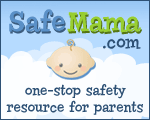 I just wanted to say what a big fan I am of the Fresh Baby food trays that I bought to make baby food! They are BPA- and phthalate-free and made in the USA. Not only that, but they are relatively inexpensive and easy to use. The lids actually do stay on (which seems to be an issue with some of the baby food freezing dishes), and they stack easily in the freezer.
I just wanted to say what a big fan I am of the Fresh Baby food trays that I bought to make baby food! They are BPA- and phthalate-free and made in the USA. Not only that, but they are relatively inexpensive and easy to use. The lids actually do stay on (which seems to be an issue with some of the baby food freezing dishes), and they stack easily in the freezer.
I bought two of them to begin with (they come two to a pack) and have since gotten four more. I will be honest, I was worried about making Sophie's food. I don't like to cook. I want to like to cook. I like the idea of cooking. I even like the idea of finding fresh and local produce to cook my meals, but the sad truth is that right now (I'm not giving up on the dream) I don't like to cook. So, I was worried that making Sophie's food would be something that I wanted to do and liked the idea of doing but wouldn't actually happen.
I am proud to say that I have been making most of Sophie's food, and it has been going really well. I'm finally getting some good use out of the food processor we were given for our wedding, and the Fresh Baby food cube trays make it easy to make a lot of food at once and have it ready for later. So far I've made sweet potatoes, bananas, butternut squash, prunes, carrots, mangoes, avocado, pear and peaches - all organic. I've also used the trays to freeze yogurt and tofu that would have otherwise spoiled. It's been great, and all but the avocado has proved palatable.




















